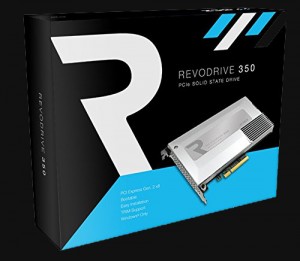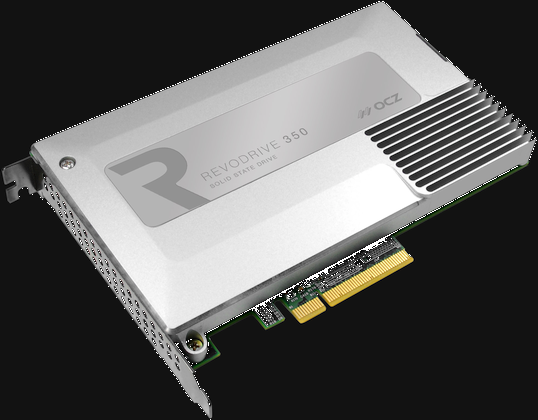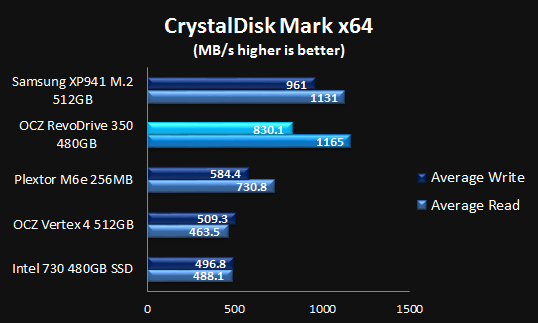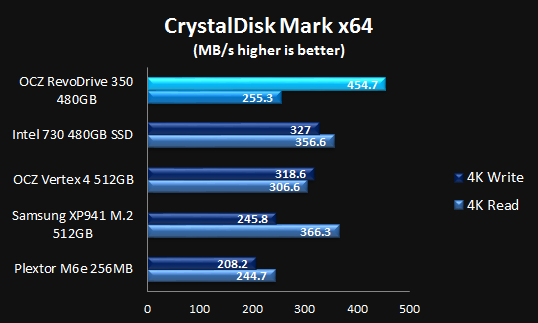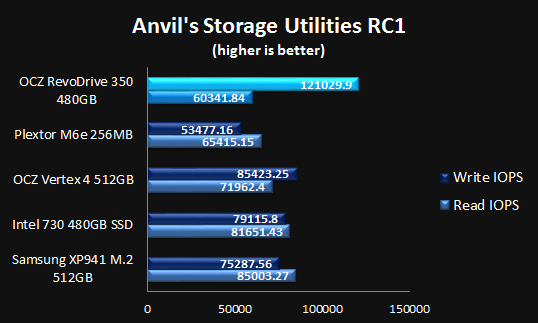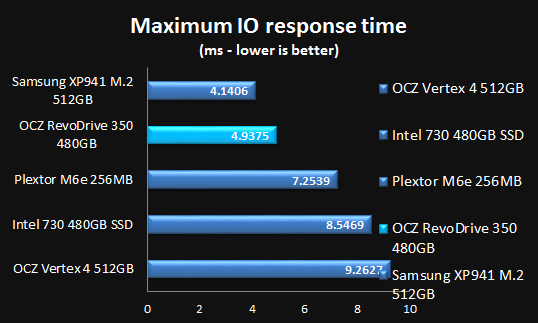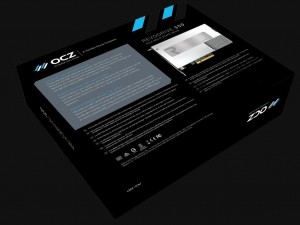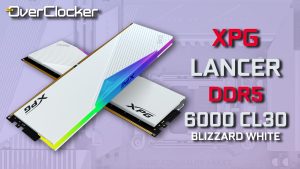OCZ RevoDrive 350 480GB Review
OCZ RevoDrive 350 480GB
Price: $758.99
Website: OCZ
In 2010, almost five years ago. OCZ brought us the original OCZ RevoDrive. At the time SSD’s as you may recall cost a fortune in their regular 2.5” format, let alone PCI-Express versions. Still, OCZ in their unyielding commitment to performance at just about any cost, made available a storage solution that was up until then, only an option for enterprise and other industries where cost was only secondary to performance.
Fast forward to today. SSDs are ubiquitous within the mid to high end computers and the same performance that cost over $200 USD for 50GB in 2010, can be had for less than half the cost today. However it is not fair nor appropriate to try and contextualize the value of the RevoDrive according to its price, for this series of drives is all about performance over and above all else. What OCZ is providing here is blistering speeds, with the utmost consistency for users who desire as always, speed above all else. With read speeds reaching the 2GiB/s barrier fast, the RevoDrive 350 is the fastest consumer drive we’ve ever tested and perhaps the fastest retail SSD one can buy at present. What follows is our experience with the drive and how it performed in our test environment.
SPECIFICATIONS
Sequential Read: 1800MB/s
Sequential Write: 1700MB/s
4K Read (Random): 90, 000 IOPS
4K Write (Random): 140, 000 IOPS
Controller: LSI SandForce SF-2282 (x4)
NAND: Toshiba A19nm MLC
Size: 180.9 x 126.3 x 21.6mm
Weight: 310g
Endurance: 50GB/day
Warranty: 3- Years
Looking at the numbers, do not be turned off by the sequential read and write performance values. These if you’re not aware by now have virtually no meaning in the real world, especially for your gaming machine. In fact outside of streaming video, there isn’t a single usage scenario where high sequential write and read speeds are meaningful. What you should focus on however is the random 4K block performance figures. These are truly impressive and despite also being much higher than we can appreciate. They speak more about the drives performance than anything else. With an in-house controller and a steady supply of NAND as result of being a TOSHIBA company, OCZ has in its corner everything it needs to stay in this business for the foreseeable future.
Test Configuration
• INTEL Core i7 4770K
• CORSAIR Dominator Platinum 2666 C10 (8GB)
• GIGABYTE Z97X SOC Force
• CORSAIR AX1500i PSU
• Windows 7 64-Bit (SP1)
Testing SSD’s always requires several rounds of benchmarks. All the results here are an average and not single run results. I try to represent best what one would see on a hard drive that’s not been primed for peak performance as that wouldn’t represent everyday performance. To that end, each result here is gathered after at least 50% of the drive has been filled up with junk data. That’s part of the reason IOPS performance isn’t able to match any manufacturer’s claims. However seeing as that the test environment is consistent; the results are in line with each other and scaling accordingly.
Performance
Right off the bat you’ll notice that the claimed or vendor numbers are far from what we recorded. As stated above, this is because all the drives we use, endure through usage and are at least filled to half capacity and more. The resulting performance figures are less impressive but they do represent a more realistic, perhaps worst case scenario. Also keep in mind that because we used a platform that is fairly starved of PCI-Express lanes, the RevoDrive 350 couldn’t fully exploit the bandwidth made available to it via it’s 8X PCI-Express 2.0 interface. Regardless, the number remain impressive to say the least.
In all tests it trades blows with the PX914 of similar capacity from Samsung XP941 which is the only other PCI-Express connected drive in the lineup (M.2). Sequential read performance is higher but the write performance which is really what we are concerned with is a little lower. Still above what the SATA 6Gbps standard can provide however, thus justifying the connection mechanism the drive uses. 4K performance shows remarkable numbers with the RevoDrive distancing itself from the competition where random writes are concerned easily showing over 100MB/s faster than the Intel 730 drive which was previously the highest performing drive we’d come across in this particular test. 4K Random read speed was something else however, showing numbers similar to those on the Plextor M6e drive. Slightly underwhelming, but still higher than the average SATA 6GBps connected SSD on the market.
Maximum IO response time was brilliant as you can see only eclipsed once again by the XP941 by less than 0.08ms. These two drives much faster than any other drive we’ve come across. Again for an SF-2281 solution this is truly remarkable performance. Closing performance testing then is the IOPS test using Anvil’s Storage Utilities. In write IOPS performance the OCZ drive walks over everything available. We didn’t sort the data in the graph as it’s very clear how dominant the RevoDrive 350 is with the closest competitor trailing by over 20,000 IOPS and more than doubling what the Plextor M6e drive delivered in the same test. Read performance however is the lowest at just over 60,000 IOPS. Again this is academic because these numbers don’t really mean much in real world use, as anything over 50,000 IOPS on a normal desktop machine is more than plenty especially compared to magnetic drives which have IOPS read performance orders of magnitude slower.
Conclusion
When I initially tested the RevoDrive 350, the Samsung XP941 was near impossible to buy from normal retailers, being available at only a select few like RamCity. However, since then the drive has become available nearly at every major online retail outlet. I mention this because it makes the RevoDrive 350s value proposition a little arduous. At present the XP941 can be had for $500. It offers a smidgen more capacity than RevoDrive 350 and for the most part delivers similar performance. At present the RevoDrive is $258 more which is a lot of money, in fact it’s so much more that you could buy an OCZ Vertex 460 480GB with the difference, and that if you’re not aware is a damn fine SSD. In OCZ’s defense however, the RevoDrive 350 costs far more to manufacture (has two SF-2281 controllers, a raid controller etc.) and is compatible with many more desktops as all it needs in essence is a compliant PCI-Express slot and the performance is made available to you. Moreover, this drive has a 3-year warranty as opposed to a 1 year warranty of the XP941, which is a major factor for me. As such, pricing was always bound to be higher than that of any other M.2 drive offering similar performance. If the price difference is justified however will be up to you, from where I stand I think it’s a smidgen too high and at even $699 it would make it that much easier to justify. Still, as far as build quality, ease of installation, compatibility and performance goes; the RevoDrive 350 delivers the goods in a way that only OCZ can.

